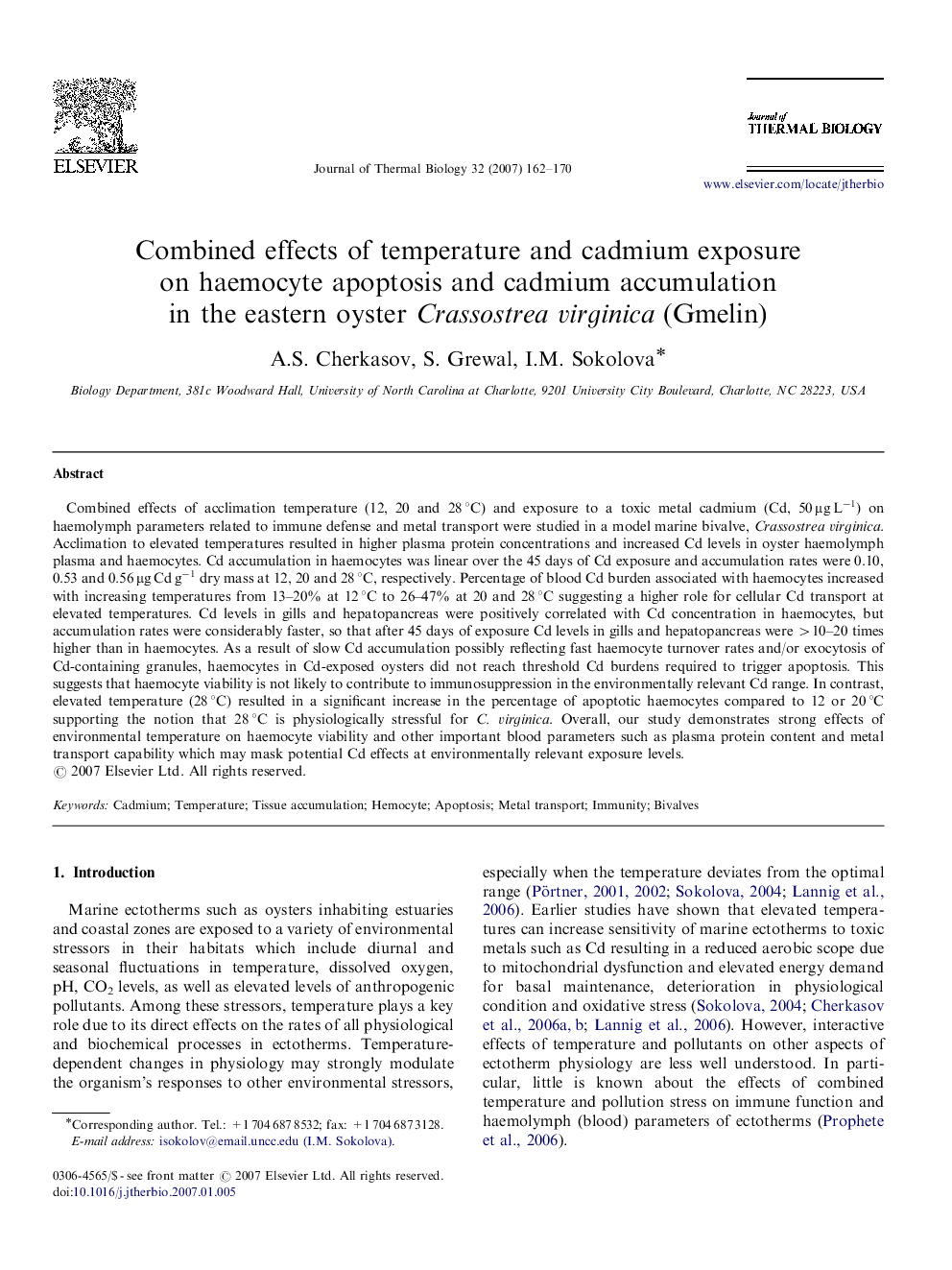| Article ID | Journal | Published Year | Pages | File Type |
|---|---|---|---|---|
| 2843698 | Journal of Thermal Biology | 2007 | 9 Pages |
Combined effects of acclimation temperature (12, 20 and 28 °C) and exposure to a toxic metal cadmium (Cd, 50 μg L−1) on haemolymph parameters related to immune defense and metal transport were studied in a model marine bivalve, Crassostrea virginica. Acclimation to elevated temperatures resulted in higher plasma protein concentrations and increased Cd levels in oyster haemolymph plasma and haemocytes. Cd accumulation in haemocytes was linear over the 45 days of Cd exposure and accumulation rates were 0.10, 0.53 and 0.56 μg Cd g−1 dry mass at 12, 20 and 28 °C, respectively. Percentage of blood Cd burden associated with haemocytes increased with increasing temperatures from 13–20% at 12 °C to 26–47% at 20 and 28 °C suggesting a higher role for cellular Cd transport at elevated temperatures. Cd levels in gills and hepatopancreas were positively correlated with Cd concentration in haemocytes, but accumulation rates were considerably faster, so that after 45 days of exposure Cd levels in gills and hepatopancreas were >10–20 times higher than in haemocytes. As a result of slow Cd accumulation possibly reflecting fast haemocyte turnover rates and/or exocytosis of Cd-containing granules, haemocytes in Cd-exposed oysters did not reach threshold Cd burdens required to trigger apoptosis. This suggests that haemocyte viability is not likely to contribute to immunosuppression in the environmentally relevant Cd range. In contrast, elevated temperature (28 °C) resulted in a significant increase in the percentage of apoptotic haemocytes compared to 12 or 20 °C supporting the notion that 28 °C is physiologically stressful for C. virginica. Overall, our study demonstrates strong effects of environmental temperature on haemocyte viability and other important blood parameters such as plasma protein content and metal transport capability which may mask potential Cd effects at environmentally relevant exposure levels.
